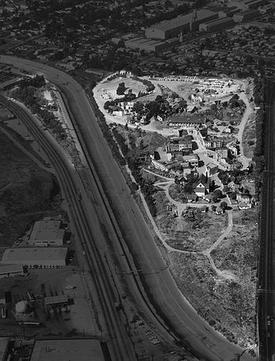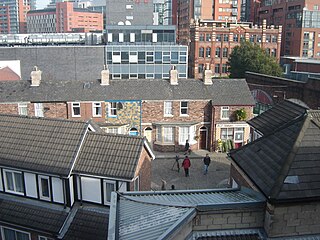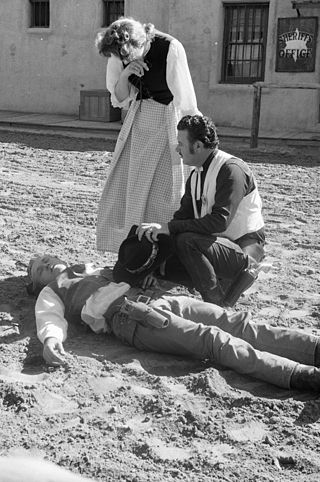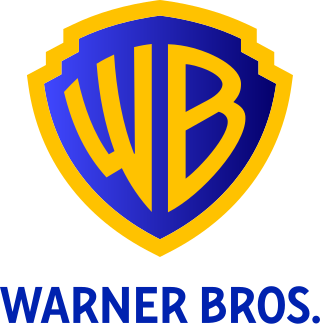In fiction, continuity is the consistency of the characteristics of people, plot, objects, and places seen by the audience over some period of time. It is relevant to many genres and forms of storytelling, especially if it is long-running.
A film crew is a group of people, hired by a production company, for the purpose of producing a film or motion picture. The crew is distinguished from the cast, as the cast are understood to be the actors who appear in front of the camera or provide voices for characters in the film. The crew is also separate from the producers, as the producers are the ones who own a portion of either the film studio or the film's intellectual property rights. A film crew is divided into different departments, each of which specializes in a specific aspect of the production. Film crew positions have evolved over the years, spurred by technological change, but many traditional jobs date from the early 20th century and are common across jurisdictions and filmmaking cultures.
Mise-en-scène is the stage design and arrangement of actors in scenes for a theatre or film production, both in the visual arts through storyboarding, visual theme, and cinematography and in narrative storytelling through direction. The term is also commonly used to refer to single scenes that are representative of a film.

A backlot is an area behind or adjoining a movie studio containing permanent exterior buildings for outdoor scenes in filmmaking or television productions, or space for temporary set construction.
Filmmaking or film production is the process by which a motion picture is produced. Filmmaking involves a number of complex and discrete stages, beginning with an initial story, idea, or commission. Production then continues through screenwriting, casting, pre-production, shooting, sound recording, post-production, and screening the finished product before an audience, which may result in a film release and exhibition. The process is nonlinear, as the director typically shoots the script out of sequence, repeats shots as needed, and puts them together through editing later. Filmmaking occurs in a variety of economic, social, and political contexts around the world, and uses a variety of technologies and cinematic techniques to make theatrical films, episodic films for television and streaming platforms, music videos, and promotional and educational films.

Principal photography is the phase of producing a film or television show in which the bulk of shooting takes place, as distinct from the phases of pre-production and post-production.
In filmmaking, dailies or rushes are the raw, unedited footage shot during the making of a motion picture. The term "dailies" comes from when movies were all shot on film because usually at the end of each day, the footage was developed, synced to sound, and printed on film in a batch for viewing the next day by the director, selected actors, and film crew members. After the advent of digital filmmaking, "dailies" were available instantly after the take and the review process was no longer tied to the overnight processing of film and became more asynchronous. Now some reviewing may be done at the shoot, even on location, and raw footage may be immediately sent electronically to anyone in the world who needs to review the takes. For example, a director can review takes from a second unit while the crew is still on location or producers can get timely updates while travelling. Dailies serve as an indication of how the filming and the actors' performances are progressing. The term was also used to describe film dailies as "the first positive prints made by the laboratory from the negative photographed on the previous day".
A production company, production house, production studio, or a production team is a studio that creates works in the fields of performing arts, new media art, film, television, radio, comics, interactive arts, video games, websites, music, and video. These groups consist of technical staff to produce the media, and are often incorporated as a commercial publisher.
In film, a redress is the redecoration of an existing movie set so that it can double for another set. This saves the trouble and expenses of constructing a second, new set, though they face the difficulty of doing it so the average viewer does not notice the same set is reused. Also there could be logistical problems, such as conflicting shooting schedules, continuity if the set is not quite the same as it was or different. The latter problem arises because the set dresser may be unaware of changes created by the action.

A filming location is a place where some or all of a film or television series is produced, in addition to or instead of using sets constructed on a movie studio backlot or soundstage. In filmmaking, a location is any place where a film crew will be filming actors and recording their dialog. A location where dialog is not recorded may be considered a second unit photography site. Filmmakers often choose to shoot on location because they believe that greater realism can be achieved in a "real" place; however, location shooting is often motivated by the film's budget. Many films shoot interior scenes on a sound stage and exterior scenes on location.
A movie ranch is a ranch that is at least partially dedicated for use as a set in the creation and production of motion pictures and television shows. These were developed in the United States in southern California, because of the climate.

The Studio Tour is a ride attraction at the Universal Studios Hollywood theme park in Universal City, California near Los Angeles. Studio Tour is the theme park's signature attraction. It travels through a working film studio, with various film sets on the Universal Studios Lot. Guests sit on multi-car trams for the duration of the ride and looking behind the scenes of Universal Pictures. The tour lasts about 45–60 minutes and is led by an in-person "tram guide", with the aid of pre-recorded videos of Jimmy Fallon. It travels through the Front Lot, Backlot, and various attractions, passing sets and properties from movies along the way. The tour inspired a smaller but similar version at Universal Studios Florida, which was removed in 1995.
Film budgeting refers to the process by which a line producer, unit production manager, or production accountant prepares a budget for a film production. This document, which could be over 130 pages long, is used to secure financing for and lead to pre-production and production of the film. Multiple drafts of the budget may be required to whittle down costs. A budget is typically divided into four sections: above the line, below the line, post-production, and other. The budget excludes film promotion and marketing, which is the responsibility of the film distributor. Film financing can be acquired from a private investor, sponsor, product placement, film studio, entertainment company, and/or out-of-pocket funds.
A traditional production board, stripboard, or production strip is a filmmaking term for a cardboard or wooden chart displaying color-coded strips of paper, each containing information about a scene in the film's shooting script. The strips can then be rearranged and laid out sequentially to represent the order one wants to film in, providing a schedule that can be used to plan the production. This is done because most films are shot "out of sequence," meaning that they do not necessarily begin with the first scene and end with the last. For logistical purposes, scenes are often grouped by talent or location and are arranged to accommodate the schedules of cast and crew. A production board is not to be confused with a stripboard used for electronics prototyping.

The sets of the British ITV soap opera Coronation Street have undergone four major and several less significant changes since the first broadcast in December 1960. Originally entirely indoors, in 1968 the original wooden set was moved outside, and shortly afterwards reconstructed in brick. In 1982 the set was entirely rebuilt in a new location. The current set, brought into use in 2013, is based at the ITV Trafford Wharf Studios backlot, MediaCityUK in Trafford.

A film – also called a movie, motion picture, moving picture, picture, photoplay or (slang) flick – is a work of visual art that simulates experiences and otherwise communicates ideas, stories, perceptions, feelings, beauty, or atmosphere through the use of moving images. These images are generally accompanied by sound and, more rarely, other sensory stimulations. The word "cinema", short for cinematography, is often used to refer to filmmaking and the film industry, and the art form that is the result of it.
A film studio is a major entertainment company that makes films. They may have their own privately owned studio facility or facilities; however, most firms in the entertainment industry have never owned their own studios, but have rented space from other companies. The day-to-day filming operations are generally handled by their production company subsidiary.

Corriganville Movie Ranch was a working film studio and movie ranch for outdoor location shooting, as well as a Western-themed tourist attraction. The ranch, owned by actor and stuntman Ray "Crash" Corrigan, was located in the foothills of the Santa Susana Mountains in the Santa Susana Pass area of Simi Valley in eastern Ventura County, California. It was destroyed by wildfires in 1970 and 1979. The site is currently a public park in the City of Simi Valley, called Corriganville Park, and operated by Rancho Simi Recreation and Park District.
Films made in the 2000s featuring the character of James Bond included Die Another Day, Casino Royale, and Quantum of Solace.

Warner Bros. Studio Tours are a pair of public attractions owned and run by Warner Bros. Entertainment Inc.










